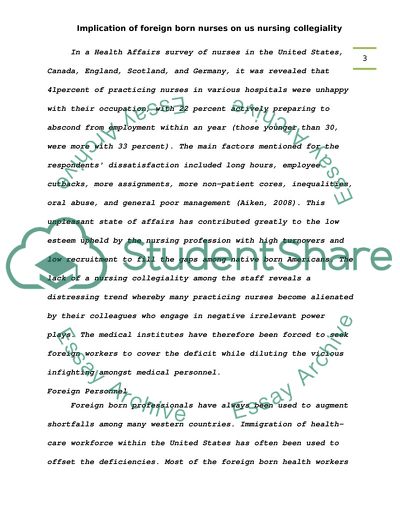Cite this document
(The Implication of Foreign-Born Nurses on the US Nursing Collegiality Thesis, n.d.)
The Implication of Foreign-Born Nurses on the US Nursing Collegiality Thesis. https://studentshare.org/nursing/1725955-has-the-emigration-of-foreign-born-nurses-change-the-paradigm-of-united-states-nursing-collegiality
The Implication of Foreign-Born Nurses on the US Nursing Collegiality Thesis. https://studentshare.org/nursing/1725955-has-the-emigration-of-foreign-born-nurses-change-the-paradigm-of-united-states-nursing-collegiality
(The Implication of Foreign-Born Nurses on the US Nursing Collegiality Thesis)
The Implication of Foreign-Born Nurses on the US Nursing Collegiality Thesis. https://studentshare.org/nursing/1725955-has-the-emigration-of-foreign-born-nurses-change-the-paradigm-of-united-states-nursing-collegiality.
The Implication of Foreign-Born Nurses on the US Nursing Collegiality Thesis. https://studentshare.org/nursing/1725955-has-the-emigration-of-foreign-born-nurses-change-the-paradigm-of-united-states-nursing-collegiality.
“The Implication of Foreign-Born Nurses on the US Nursing Collegiality Thesis”. https://studentshare.org/nursing/1725955-has-the-emigration-of-foreign-born-nurses-change-the-paradigm-of-united-states-nursing-collegiality.


